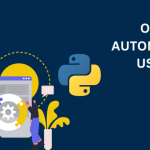Everyone talks about being digitally transformed. But, no one says that it’s tedious, tiring, and tenacious. You make a wrong move, and you’re doomed. The failure possibilities are so apparent that only 78% of digital transformation efforts turn out effective and fruitful.
A study by Forbes in 2016 was more shocking as it revealed that digital transformation has an 84% failure rate. Both the statistics are nerve-wracking and enough to send a chill down your spine. As digital transformation is time and cost-consuming, no one can afford failure.
As a business planning to go through digital transformation, you must remain extra concise and ensure that you’re not making mistakes that will lead you to your downfall. But what is Digital Transformation Mistakes? Well, let’s figure them out.
The Obvious Reasons Causing Digital Transformation Failure
Digital transformation is a long and ongoing process. Its failure isn’t possible just because of a single move. Failure happens when things are misplaced at different stages. If you don’t want things to go south, get aware of the key reasons causing digital transformation failures and try to avoid them.
1 – No proper alignment between your organizational needs and digital transformation strategy
Things are bound to fail when your organization’s demands and what you’re offering are not in sync. Often, a mismatch between requirements and deliverable solutions leads to an operational gap that’s hard to fill.
For instance, if your organization requires an IoT device to collect the real-time health data of your employees, but you’re developing a solution that can only track attendance, work hours, and productivity, your prime goal remains unattended.
This causes two issues. First, you won’t be able to have the solution that you wanted. Second, you invest in something that wasn’t required in the first place. Hence, your investments and efforts go in vain while you experience no enhancement in productivity despite going through a digital transformation. Such a transformation is a failure only.
This is why experts recommend giving enough attention to what you need and what you are getting. Pay due diligence to determine your organizational needs and plan your digital transformation journey accordingly. If you’re having a tough time figuring out the exact needs, which you will certainly have, as it’s not an easy job, it’s wise to take the help of a digital transformation consultation. This professional help will bring clarity to things and will make everything smooth.
2 – Your team isn’t confident enough
No matter how impressive and productive an AI [Artificial Intelligence] or IoT tool seems, it’s of no use if there is not a single human mind to process what it’s collecting, use the data to chuck out insightful results, and use the tool as it should be. You need humans to make most of those tools. But, some team members won’t accept the digital transformation whole-heartily. They will fear messing things up as they are not confident to operate and use the new tools and technologies.
While a few team members will become well-versed in the new technology stack after training, demo, and a few years of usage, a handful of employees won’t be able to ditch their love for the legacy system. They will cause limited penetration of digital transformation. This is also a sign of digital transformation failure.
3 – Not paying attention to the customer experience
If you’re not pivoting your digital transformation journey around the customer experience, then you’re constructing an ideal digital transformation journey criteria. Customers support the business and bring revenue. They breathe oxygen in the business. So, it’s imperative that you design solutions that are easy to be used and processed by customers.
However, not most businesses understand this. They only pay attention to the shiny and glittery things and adopt what fancies them. CIOs, who are in a hurry to get the digital transformation done, often forget to ponder over the customers’ experience with the tools they are going to offer. If it’s not as per the customers’ expectations, they don’t use it and your efforts will go in vain.
4 – Making everything go fast
You want to replace all legacy tools in one go, update the versions of new software today only, and want to have full-fledged digital tools and technologies overnight. This haste is what leads to failure. When things are moving at such a fast pace, you won’t be able to prioritize things. As every stage of digital transformation requires undivided attention, it’s impossible to deliver it when so many things are going on simultaneously.
With improper governance and monitoring, digital transformation tends to become faulty, inappropriate, and won’t be implemented in a result-driven way. This is a sign of failure.
5 – Not planning the digital transformation as per your spending capacity
We all want to be equipped with fancy and high-end tools. But, there’s no point in having them when you can’t afford them. It’s observed many times that businesses often get carried away and get high to implement digital transformation in the best capacity without paying attention to the funds available.
They get high-end tools but fail to afford their maintenance and updates. This is where the problem starts. If there are no updates and maintenance, every tool is bound to become irrelevant. And, you can’t proceed with an out-of-sync tool.
6 – Not revamping the policies and compliances
The adoption of AI, IoT, and other digital transformation tools demands certain changes in internal policies and adherence to certain compliances. For instance, if you’re going to use an IoT device that will keep a log of real-time data of customers, you have to make changes in your Terms & Conditions and Privacy Policies. You need to displace all information you’re going to log and for how long.
Data privacy has become customer-oriented these days. Now, customers are allowed to decide which information they want to reveal and which one they want to keep a secret. If you’re not making your privacy policy in accordance with this current requirement, chances are high that your tool won’t please the customers as it should.
Also, there are certain compliances that one has to adhere to while offering tools that collect sensitive data. If you’re not adhering to an essential complaint, your customers won’t try your tools. Hence, it will be a failure.
You’re Not Meant For Failure
You can’t afford to face failure when it comes to digital transformation. When everyone around you is making a move and tasting success, failure will be a setup for you. You have to be extra smart and try everything possible to make your digital transformation a huge success. What can you do to make this happen?
Well, the smartest move here is to hire a skilled and seasoned digital transformation service provider like C-Metric. The professional consultation of DXSP will help you have better clarity on aspects like:
- What technology should you take on board
- How the digital transformation should proceed
- How much training does the team require
- How to optimize the expenses involved
When all these things are sorted, and the digital transformation strategy is well aligned with your goals and requirements, failures won’t be seen anywhere.















Get in Touch